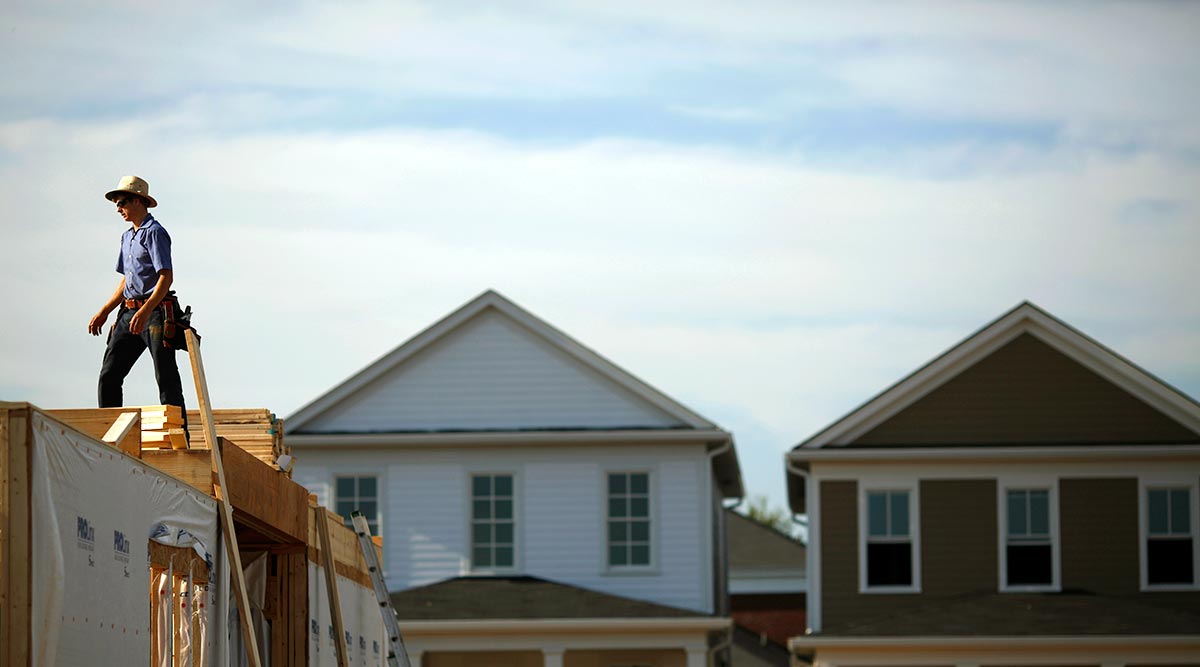Sales of New Homes Slump to Lowest Level Since November

Purchases of new U.S. homes slumped in September to a 10-month low, disrupting a trend of steady improvement this year in the industry.
Sales dropped 11.5% to a 468,000 annualized pace and the prior two months were revised lower, Commerce Department figures showed Oct. 26. The September rate, which included a record percentage decline in the Northeast, was weaker than all economists’ forecasts in a Bloomberg survey.
Limited inventory of affordable homes and viable lots on which to build them may be holding back progress in housing, which has helped buffer the U.S. from slower growth abroad.
Builders may need confirmation that fundamentals supporting the housing recovery — job growth and cheap borrowing costs — remain in place before investing in additional land and labor.
“Demand remains very good, it’s just a matter of availability being a little tight,” Russell Price, senior economist at Ameriprise Financial Inc., said before the report. “It’s constraining the pace of improvement.”
The median estimate in the Bloomberg survey called for a 549,000 rate of sales in September. Economists’ estimates ranged from 508,000 to 580,000. August purchases were revised to 529,000 from a previously reported 552,000. July was revised down by 19,000.
The revisions suggest the September data should also be considered as preliminary. The report said there was 90% confidence the change in sales last month ranged from a 0.2% drop to a 22.8% decrease.
The median price of a new home increased 13.5% last month from September 2014 to $296,900, the highest this year.
Purchases dropped in all of four regions in September, led by a record 61.8% slump in the Northeast from a month earlier. Sales weakened 8.7% in the South, 8.3% in the Midwest and 6.7% in the West.
The supply of homes at the current sales rate increased to 5.8 months from 4.9 months in August. There were 225,000 new houses on the market at the end of last month, up from 216,000 in August.
Sales of new properties, which are counted when contracts are signed, are considered a more timely measure of the market than previously owned dwellings, which are counted when a purchase is finalized.
Purchases of existing homes climbed 4.7% to a 5.55 million annualized rate in September, due entirely to a jump in purchases of single-family dwellings, the National Association of Realtors said Oct. 22.
Meanwhile the number of existing properties on the market decreased 2.6% to 2.21 million, the fewest since April.
At the current pace, it would take 4.8 months to sell those houses compared with 5.1 months at the end of August.
The report runs counter to other recent housing data that have portrayed a steady recovery, supported by job gains and low interest rates.
Those fundamentals are making homebuilders more confident about the outlook, with the National Association of Home Builders/Wells Fargo sentiment gauge climbing in October to a 10-year high.
That optimism is helping drive construction, with housing starts rising 6.5% to a 1.21 million annualized rate last month, the second-highest level in eight years, figures from the Commerce Department showed last week.
Additional improvement in the market will be needed to help support the world’s largest economy at a time when a slowdown in international growth threatens to throttle domestic momentum.
Federal Reserve policymakers will be taking the sector’s health into consideration as they try to time their first interest rate increase since 2006.
After last month putting off a rate increase, Fed officials will meet again this week. Odds the central bank will lift borrowing costs by year-end have diminished.


